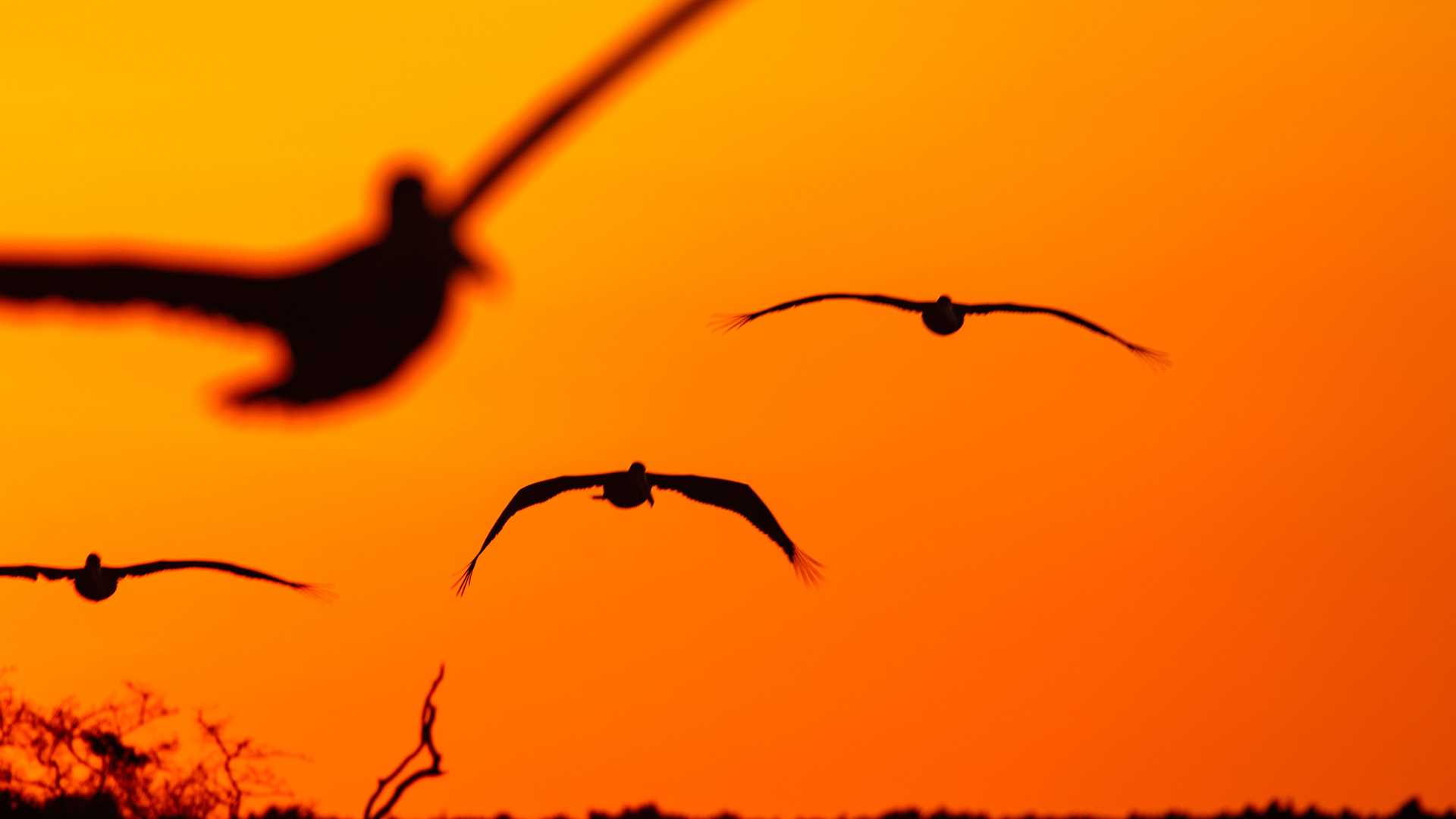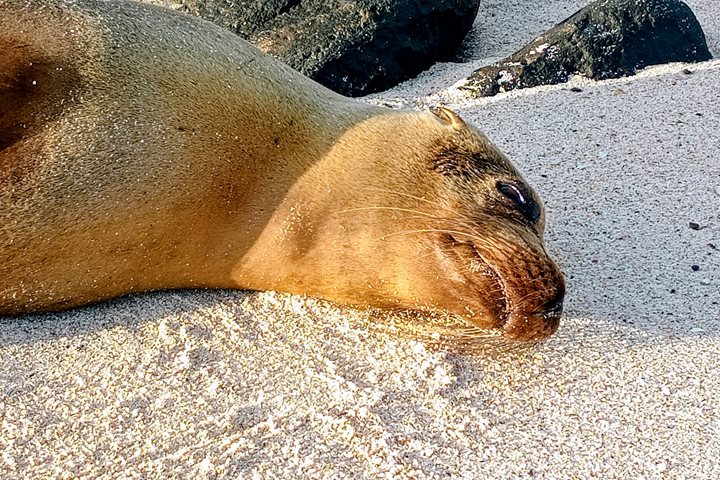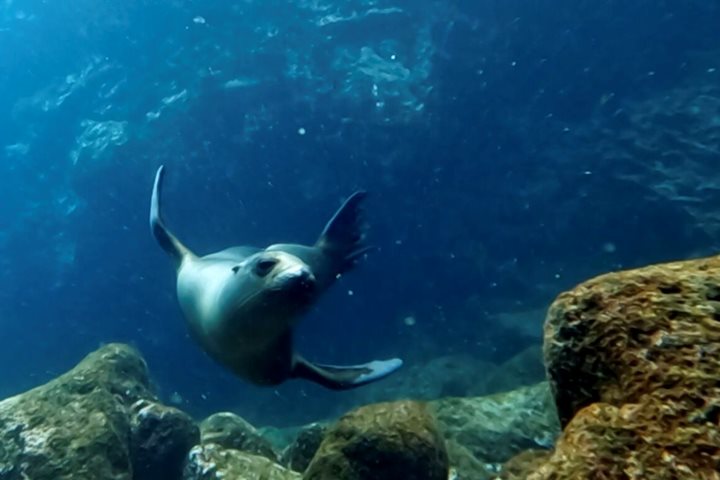Early in the morning, we woke up to the view of large volcanoes in the distance. We enjoyed observing the view of the coastline of Isabela, the largest island in the archipelago. After breakfast, we headed out on a Zodiac ride along the coast of the nose of seahorse-shaped Isabela Island in search of wildlife. We spotted several Galapagos penguins fishing, Pacific green sea turtles, sea lions, blue-footed boobies, and one of the most stunning geological sites in this enchanted archipelago.
After an incredible Zodiac ride, we went deep water snorkeling within a protected cove, where we swam with sea turtles. Several of these gentle reptiles rested on the bottom of the ocean while others swam around, feeding on green algae off the rocky shallows. We also had the incredible opportunity to swim with Galapagos penguins and flightless cormorants. A couple of curious Galapagos sea lions came to say hello and remained nearby for a few minutes. The water was a bit cold yet full of life everywhere we explored.
After lunch, we had a dry landing onto the youngest island of the Galapagos. This is Fernandina, a young, pristine island with black lava flows everywhere. With the island’s abundant wildlife, it was like traveling back in time to learn about the beginning of the islands before human impact. We were welcomed by hundreds of marine iguanas basking under the sun. These marine iguanas were large and black. They are endemic to the Galapagos, and they are the only sea-foraging iguanas on the planet.
The process of primary succession is just starting on this island. Pioneer species like lava cacti are located on the barren lava fields, and marine iguanas occupy a large territory of the coastline. We explored the only visitor site on Fernandina. It was a magical experience to watch the abundance of wildlife at sunset with golden colors in the distance.







